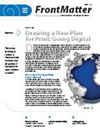Change in the Urban Landscape of the Drakensberg Mountain Region, South Africa: A Case Study of Phuthaditjhaba
IF 1.8
4区 环境科学与生态学
Q4 ENVIRONMENTAL SCIENCES
引用次数: 0
Abstract
The settled landscape in the Drakensberg Mountain region of South Africa is characterized by increasing urbanization. Some of the supposedly rural settlements in the region have experienced increasing change in their landscapes over the last 3 decades, resulting in significant land use and land cover (LULC) changes. Among such settlements, Phuthaditjhaba and its environs are slowly becoming a metropolitan area. Based on conceptual considerations regarding sustainable urban development, we assessed LULC change using 4 Landsat images from 1989, 1999, 2009, and 2019 and a combination of unsupervised and supervised classification methods. The images were classified into 4 LULC classes. Between 1989 and 2019, the urban built-up area in Phuthaditjhaba increased from about 5% to 19%, representing a total increase of 270%. However, the greatest increase in land cover was in bare surface at the expense of vegetated areas, including farmland, which decreased from about 45% to 15%. The increase in bare surface could be due to fires. Built-up areas also increased due to a consistent increase in population density in the study area. We further described spatial patterns in LULC using selected landscape metrics. A decrease in patch density (PD) and cohesion, coupled with constant edge density (ED) and an increase in the fractal dimensional index (FDI), indicates fragmentation and less connectivity between 1989 and 1999; we interpret this as a sign of unsustainability. An increase in PD and cohesion and fluctuations in ED and FDI show that land patterns were more aggregated between 2009 and 2019. At the class level, an increase in PD, cohesion, and ED also showed more aggregated land patterns, which was confirmed by the mean patch size. The FDI revealed greater connectivity, which we also interpreted as unsustainable because of the increase in bare surface and built-up areas. Integrative coplanning and comanagement of land use and allocation are needed to ensure sustainable development.南非德拉肯斯堡山区城市景观的变化——以普萨蒂贾巴为例
南非德拉肯斯堡山区的定居景观以日益增长的城市化为特征。在过去的30年里,该地区一些所谓的农村定居点的景观发生了越来越大的变化,导致土地利用和土地覆盖(LULC)发生了重大变化。在这些定居点中,普塔迪贾巴及其周边地区正慢慢成为一个大都市地区。基于可持续城市发展的概念考虑,我们使用1989年、1999年、2009年和2019年的4张Landsat图像,并结合非监督和监督分类方法评估了LULC的变化。将图像分为4个LULC类。1989年至2019年期间,普塔迪贾巴的城市建成区面积从约5%增加到19%,总增幅为270%。然而,土地覆盖增加最多的是光秃秃的地表,包括农田在内的植被面积从45%左右下降到15%。裸露地表的增加可能是由于火灾。由于研究区域的人口密度持续增加,建成区也在增加。我们使用选定的景观指标进一步描述了LULC的空间格局。1989 - 1999年斑块密度和内聚度的降低,边缘密度不变,分形维数指数增加,表明区域碎片化程度较低,连通性较差;我们认为这是不可持续的迹象。gdp和凝聚力的增加以及FDI和FDI的波动表明,2009 - 2019年土地格局更具聚集性。在类水平上,PD、凝聚力和ED的增加也表现出更聚集的土地格局,这一点得到了平均斑块大小的证实。外国直接投资显示了更大的连通性,我们也认为这是不可持续的,因为裸露地面和建成区的增加。为了确保可持续发展,需要对土地使用和分配进行综合共同规划和管理。
本文章由计算机程序翻译,如有差异,请以英文原文为准。
求助全文
约1分钟内获得全文
求助全文
来源期刊
CiteScore
3.10
自引率
18.80%
发文量
36
审稿时长
4.5 months
期刊介绍:
MRD features three peer-reviewed sections: MountainDevelopment, which contains “Transformation Knowledge,” MountainResearch, which contains “Systems Knowledge,” and MountainAgenda, which contains “Target Knowledge.” In addition, the MountainPlatform section offers International Mountain Society members an opportunity to convey information about their mountain initiatives and priorities; and the MountainMedia section presents reviews of recent publications on mountains and mountain development.
Key research and development fields:
-Society and culture-
Policy, politics, and institutions-
Economy-
Bio- and geophysical environment-
Ecosystems and cycles-
Environmental risks-
Resource and land use-
Energy, infrastructure, and services-
Methods and theories-
Regions

 求助内容:
求助内容: 应助结果提醒方式:
应助结果提醒方式:


